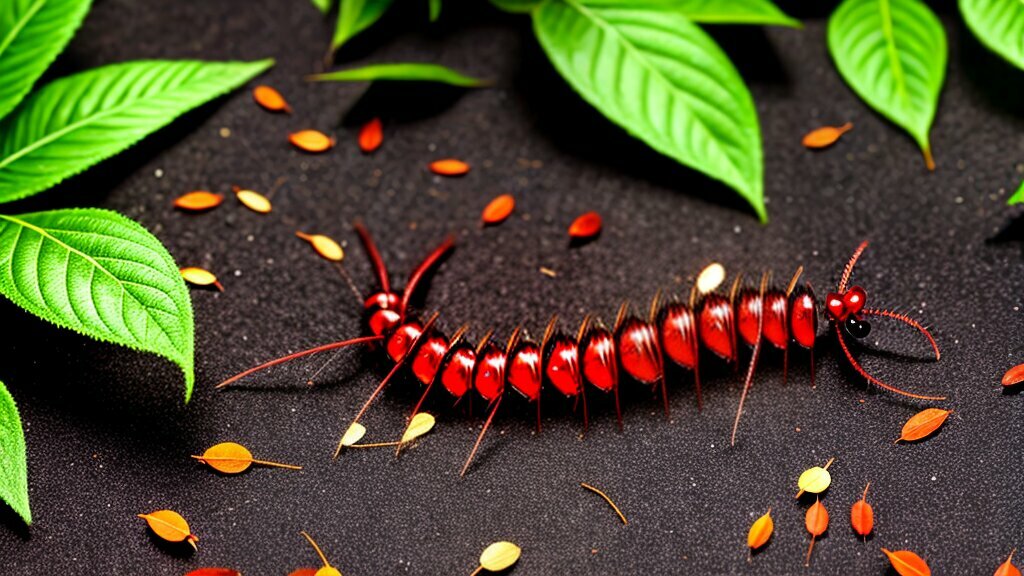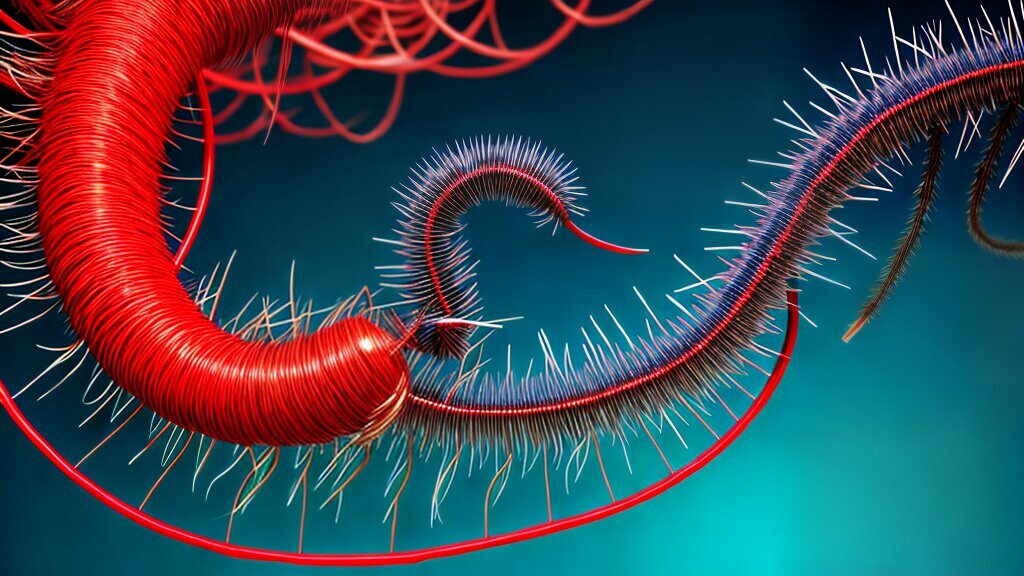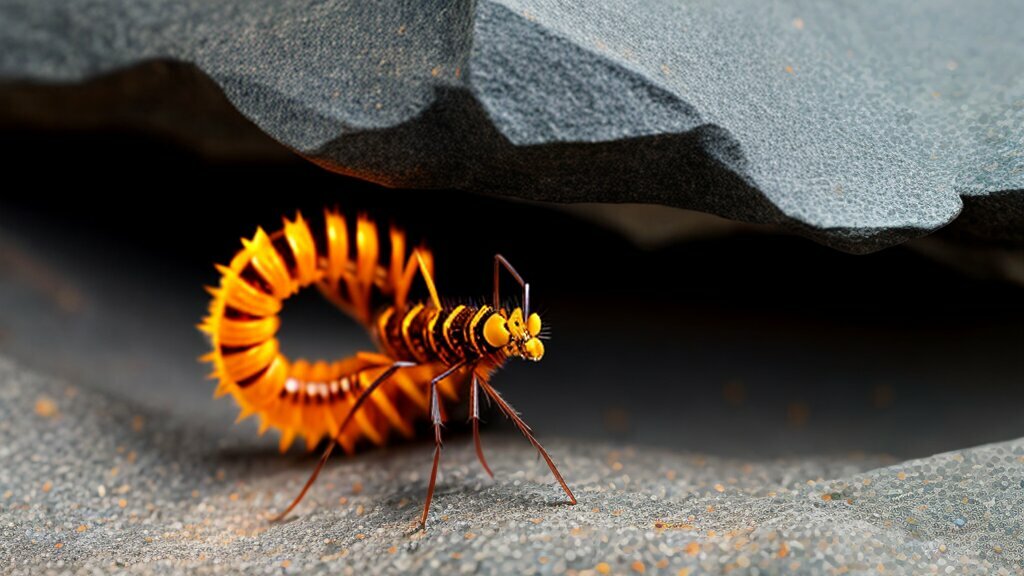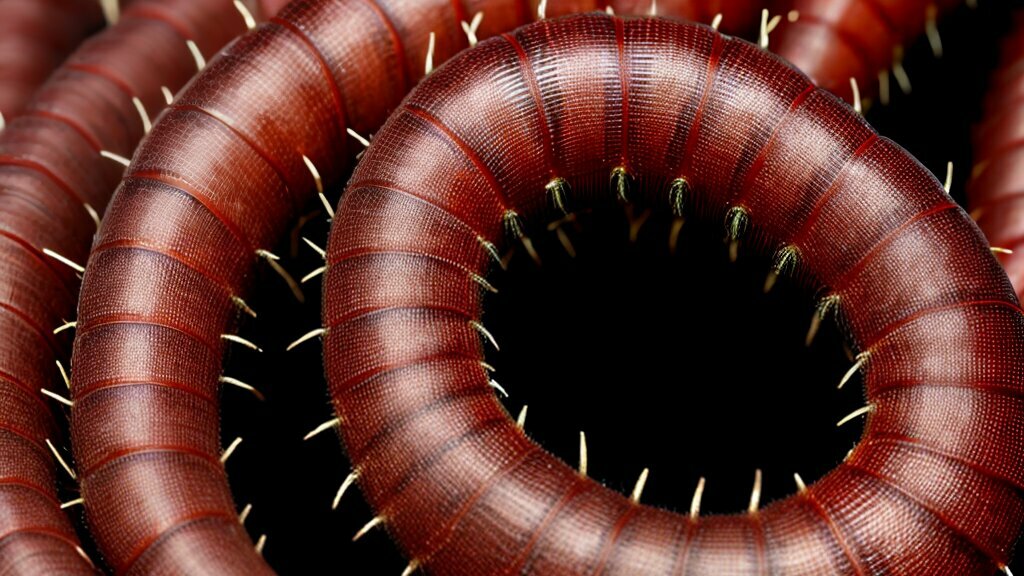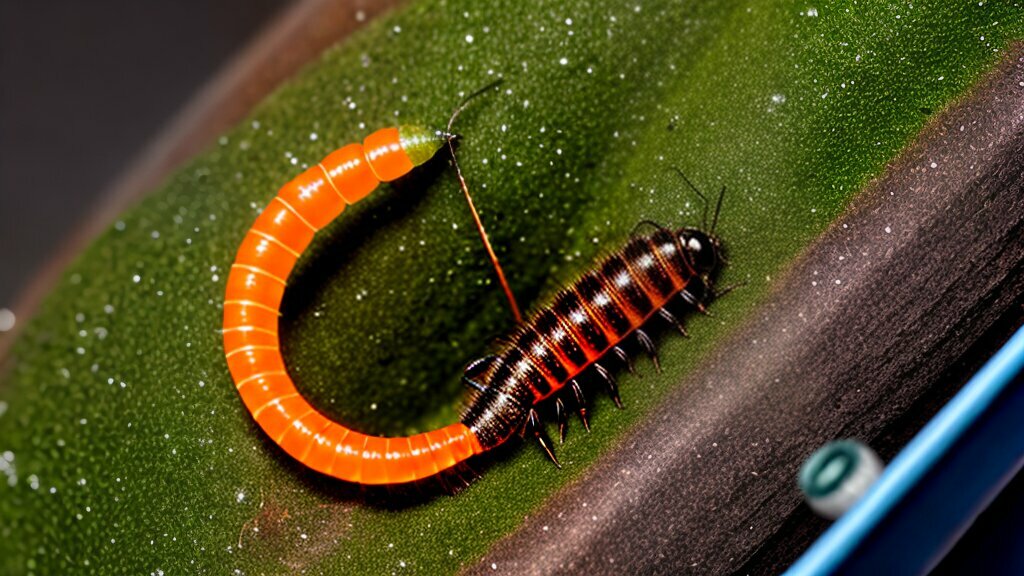Centipedes are fascinating creatures that belong to the class of arthropods. They are found in various habitats, from forests to deserts, and are known for their ability to adapt to different environmental conditions. One of the most common questions that people ask about centipedes is whether they need oxygen to survive. In this article, we will explore the respiratory system of centipedes and their oxygen requirements to provide you with accurate information.
Key Takeaways
- Centipedes require oxygen for their physiological processes.
- Centipedes obtain oxygen through their respiratory system.
- Oxygen deprivation can have severe consequences for centipedes.
- Environmental factors can affect the availability of oxygen for centipedes.
- Centipedes have physiological and behavioral adaptations to ensure an adequate oxygen supply.
The Respiratory System of Centipedes
Centipedes breathe through a network of trachea, which are tubes that run through their bodies and facilitate gas exchange. These tubes open through small holes, called spiracles, located along the sides of their bodies.
The trachea system in centipedes is analogous to the lungs in vertebrates, as it allows for efficient exchange of gases between the body and the environment. Oxygen from the air diffuses into the trachea and is transported to the cells, while carbon dioxide produced by cellular respiration diffuses out of the body and into the surrounding air.
While the respiratory system in centipedes is relatively simple compared to some other animals, it is highly effective at meeting their oxygen requirements. As a result, centipedes are adept at surviving in a range of environments, from damp forests to arid deserts.
Oxygen Requirements of Centipedes
Centipedes require oxygen to carry out their physiological processes and survive. Their oxygen needs vary depending on factors such as species, size, activity level, and environmental conditions.
Generally, larger centipedes require more oxygen than smaller ones due to their higher metabolic rates. For instance, the giant centipede (Scolopendra gigantea) has a larger respiratory surface area and can absorb oxygen more efficiently than smaller species.
Centipedes also have varying degrees of tolerance for low-oxygen environments. Some species have developed physiological adaptations, such as an increased number of spiracles (openings on their bodies for gas exchange) or higher hemoglobin concentration in their blood, to help them survive under low-oxygen conditions.
Research has shown that exposure to low oxygen levels can have significant effects on centipedes. For example, a study on the common desert centipede (Scolopendra polymorpha) found that exposure to hypoxic conditions caused a decrease in heart rate and locomotor activity, indicating a reduction in overall physiological function.
Overall, adequate oxygen availability is crucial for centipede survival and optimal physiological function.
Adaptations for Oxygen Uptake in Centipedes
Centipedes have evolved several physiological adaptations to facilitate effective oxygen uptake from their surroundings. One of the most notable adaptations is the presence of respiratory openings called spiracles, located on the sides of their body segments.
Through the spiracles, centipedes can take in air and transport it to specialized respiratory organs called tracheae. These tracheae extend throughout their body and deliver oxygen directly to their cells, allowing for highly efficient oxygen exchange.
| Adaptation | Description |
|---|---|
| Tracheae | Specialized respiratory organs that transport oxygen directly to centipede cells. |
| Spiracles | Respiratory openings located on the sides of centipede body segments, through which air is taken in. |
| Tubercles | Small projections on the surface of centipede skin that enhance gas exchange by increasing surface area. |
Centipedes also possess small projections on their skin called tubercles, which increase their surface area for gas exchange. This further enhances their ability to effectively take in and utilize oxygen for survival.
Oxygen Transport in Centipedes
After oxygen is taken up by the respiratory system of centipedes, it is transported to the various tissues and organs throughout their body. This is achieved through their circulatory system, which consists of a tubular heart and a network of arteries, veins, and capillaries.
The heart of centipedes pumps hemolymph, a fluid similar to blood, through their circulatory system. Oxygen is bound to a respiratory pigment called hemocyanin, which is then transported by the hemolymph to the tissues and organs that need it.
The efficiency of oxygen transport in centipedes is influenced by various factors, including the availability of oxygen, the concentration of hemocyanin, and the rate of circulation. Some species of centipedes have evolved specialized respiratory structures, such as tracheae or book lungs, which can further facilitate oxygen transport and enhance their overall oxygen uptake capacity.
Oxygen Deprivation in Centipedes
Oxygen is essential for the survival of centipedes, as it fuels their metabolic processes and enables them to carry out necessary physiological functions. However, there may be instances where centipedes are deprived of oxygen, which can have detrimental effects on their health and survival.
Under low oxygen conditions, also known as hypoxia, centipedes may experience a decrease in their respiratory rate and overall oxygen uptake. This can lead to a build-up of carbon dioxide within their bodies, causing respiratory acidosis and potentially compromising their organ systems.
Centipedes have been found to exhibit certain behavioral adaptations in response to low oxygen levels. For instance, some species may increase their surface activity in search of oxygen-rich environments, while others may reduce their activity and enter a state of torpor to conserve energy and lower their metabolic rate.
It is important to note that the tolerance of centipedes to oxygen deprivation may vary depending on species and habitat conditions. Some have been observed to survive for extended periods of time under hypoxic conditions, while others may be more susceptible to oxygen stress and experience higher mortality rates.
Overall, it is crucial to maintain adequate oxygen levels for the wellbeing of centipedes and other organisms in their ecosystem. This can be achieved through the preservation of natural habitats and minimizing human activities that may disrupt oxygen availability.
Myths about Centipedes and Oxygen
There are several myths surrounding the oxygen requirements of centipedes that are not based on scientific evidence. It is important to debunk these myths to ensure accurate information is shared regarding the respiratory needs of these creatures.
Myth: Centipedes can survive without oxygen.
This is false. Like all living organisms, centipedes require oxygen for survival. Without access to oxygen, they would not be able to carry out essential physiological processes such as respiration and metabolism.
Myth: Centipedes can breathe through their skin.
While some animals, such as amphibians, are capable of breathing through their skin, centipedes require a specialized respiratory system to obtain oxygen. They cannot rely solely on their skin for respiration.
Myth: Centipedes need less oxygen than other animals due to their small size.
Size does not determine the oxygen requirements of an organism. Centipedes may have a lower metabolic rate than larger animals, but they require a similar amount of oxygen to carry out essential physiological processes.
Myth: Centipedes can live in oxygen-deprived environments.
While some species of centipedes are adapted to low-oxygen environments, they still require access to oxygen for survival. A total lack of oxygen would be fatal to any centipede species.
By debunking these myths, we can ensure that accurate and reliable information is shared regarding the oxygen requirements of centipedes. It is important to understand these requirements to ensure the survival and well-being of these fascinating creatures.
Factors Affecting Oxygen Availability for Centipedes
While centipedes require oxygen for their survival, the availability of oxygen in their environment can vary depending on a range of factors.
The habitat in which a centipede lives can significantly impact its oxygen supply. For instance, centipedes that live in burrows or underground tunnels may have limited access to oxygen, as the soil may contain lower levels of oxygen compared to the atmosphere.
The temperature of the environment can also have an influence on the amount of oxygen available. Low-temperature environments can reduce the amount of dissolved oxygen in water, which can impact aquatic centipedes.
Furthermore, air pollution can lower oxygen levels in the air. Centipedes living in areas with high pollution may have difficulty obtaining sufficient oxygen, which can lead to adverse effects on their health and lifespan.
It is important to note that these factors can vary depending on the species of centipede, as different types may have different oxygen requirements and adaptations to their environment.
Ensuring Oxygen Supply for Centipedes
Centipedes require oxygen to survive, and as such, they have evolved various adaptations to ensure an adequate supply of this vital gas. One way in which they obtain oxygen is through their respiratory system, which allows for gas exchange with the environment.
However, environmental factors such as habitat conditions and temperature can influence the availability of oxygen for centipedes. Therefore, they have developed several behavioral adaptations to ensure they have access to sufficient oxygen.
For instance, many centipede species prefer moist environments to prevent their respiratory surfaces from drying out. They may also burrow underground to escape dry or hot conditions, which can reduce the amount of oxygen in the air.
In addition to behavioral adaptations, centipedes may also select specific habitats that provide an adequate supply of oxygen. For example, some species prefer areas near water sources, such as streams or ponds, where the air is more likely to contain higher levels of oxygen.
Ultimately, centipedes rely on a combination of physiological and behavioral adaptations to ensure they have access to sufficient oxygen. By understanding their oxygen requirements and the factors that influence their availability, we can better appreciate these fascinating creatures and their adaptations for survival.
Conclusion
In conclusion, oxygen is essential for the survival of centipedes. Their respiratory system plays a crucial role in obtaining oxygen and removing carbon dioxide from their bodies. Centipedes have adapted to their environments to facilitate efficient oxygen uptake and transport within their bodies. Oxygen deprivation can have significant consequences on their physiological functions.
There are common misconceptions surrounding the oxygen needs of centipedes, but it is important to understand the significance of oxygen in their survival. Factors that affect the availability of oxygen in their habitats can influence their oxygen intake. Centipedes have developed behavioral adaptations to ensure a sufficient oxygen supply for their survival.
It is important to recognize the role of oxygen in the lives of centipedes and to dispel any myths surrounding their respiratory needs to promote a better understanding of these fascinating creatures.
FAQ
Q: Do centipedes need oxygen?
A: Yes, centipedes require oxygen for their survival as it plays a vital role in their physiological processes.
Q: What is the respiratory system of centipedes like?
A: The respiratory system of centipedes allows them to obtain oxygen and remove carbon dioxide from their bodies.
Q: What are the specific oxygen requirements of centipedes?
A: The oxygen requirements of centipedes can vary among different species and are influenced by various factors.
Q: How do centipedes adapt for efficient oxygen uptake?
A: Centipedes possess physiological adaptations that facilitate efficient oxygen uptake from their environment.
Q: How do centipedes transport oxygen within their bodies?
A: Centipedes rely on their circulatory system to transport oxygen throughout their bodies.
Q: What are the consequences of oxygen deprivation in centipedes?
A: Oxygen deprivation can have adverse effects on the physiological functions of centipedes.
Q: What are some myths about centipedes and oxygen?
A: There are common misconceptions surrounding centipedes and their oxygen requirements that need to be debunked.
Q: What factors affect the availability of oxygen for centipedes?
A: Environmental factors, such as habitat conditions and temperature, can influence the availability of oxygen for centipedes.
Q: How do centipedes ensure an adequate oxygen supply?
A: Centipedes have behavioral adaptations and select habitats that allow them to ensure a sufficient oxygen supply for their survival.

